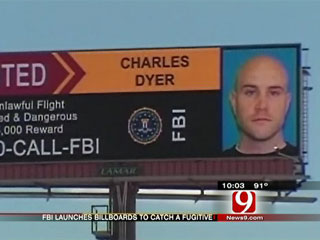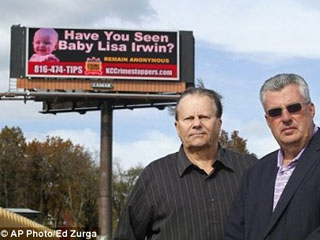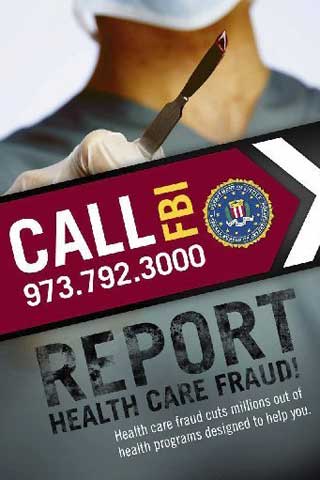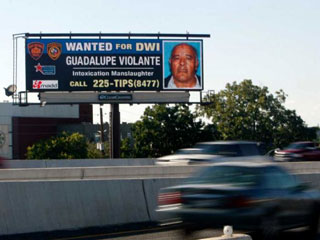Digital billboards as police and FBI resource
Specialists, experts and avid readers of political thrillers know about the US program focused on search of missing people (primarily children) called Amber Alert. All others, including the majority of people working in outdoor advertising the program, used to know pretty little about Amber Alert Program. Until on the eve of the 15-th anniversary of Amber Alert clever PR advisors to FBI suggested to start using digital billboard networks as a way to increase Program’s appeal, revitalize the useful search program and improve its efficiency through modern technical means.
Since digital billboard networks are most widely spread in the USA, it was there that police initiated first experiments in appealing to the US citizens for help in tracking down criminals and searching for missing persons. Our magazine reported on search experiments using digital billboards in a whole series of articles, including “Utilization of outdoor screens in emergency situations” and “Digital LED screens and American bureaucracy”.
After several success stories FBI signed and official contract with three largest outdoor operators - Lamar, CBS Outdoor and Clear Channel – about using their digital billboards for immediate and focused broadcasting of materials related to search activities and emergency situations. In more detail you can read about this in our article “Outdoor LED billboards and fight against terror”.
Today we wanted to describe several new successful operations in using digital billboard networks in solving important governmental tasks. One of the latest success stories deals with posting “Wanted” slides and apprehension of Charles Alan Dyer, former special forces veteran turned criminal in about a dozen states in the South and Southeast. Direct appeal of the authorities to population always has beneficial effect both in helping identify and apprehend criminals or find missing persons and in improving the image of police among general population.
 |
 |
| FBI alert for the former Special Forces serviceman Charles Alan Dyer on one of Lamar’s digital billboard Photo credit: news9.com |
Digital billboard message with a request for help in searching for the missing baby Lisa Irwin |
 Information from the FBI about health Care fraud that is being placed on digital billboards
Information from the FBI about health Care fraud that is being placed on digital billboardsPhoto credit: FBI
Clear Channel Agency has dedicated all of its existing outdoor LED screens to the Amber Alert Program. The Agency was also included in the ETS (Electronic Tracking System) - the nation-wide system of electronic data exchange between police departments that utilizes advanced tracking and location technology to identify criminals, search for missing people, recovering stolen property etc. Realising the potential of DOOH networks, FBI decided to invest into 39 outdoor LED screens in Phoenix (Arisona). Apart from its direct advertising purposes, the outdoor LED screens will perform an important public service and become a part of the ETS network. Outdoor LED screens in Phoenix will be able to broadcast nearly 17 million slides per week which will inevitably lead to higher alertness of local population and higher efficiency of police work.
As the experiment goes on, new formats of public-private partnership appear. Today FBI does not only place “Wanted” signs on digital billboards. Recently the Newark (New Jersey) digital billboard network started a campaign of public awareness against health care frauds. The fact is that Health Care fraud causes one of the largest losses of taxpayer dollars from a government program, with Medicare and Medicaid, as the largest publicly funded programs, targeted frequently.
Independent estimates of fraudulent billings to health care programs in the US are estimated at between 3% and 10% of total health care expenditures, representing astronomical $200 billion in losses to fraud each year. Preventing even a tiny portion of such frauds will fully justify police expenditure on sponsoring awareness programs and “Be alert” ads on digital billboards.
 Information about drunk drivers is another useful search program using digital billboards
Information about drunk drivers is another useful search program using digital billboardsPhoto credit: mysanantonio.com
And here is an example of yet another experiment in San Antonio (Texas), the seventh largest US city. The local police department works together with the public organization Mothers Against Drunk Driving in using 12 digital billboards along local highways for warning against drunk drivers and reminding of telephone numbers where DUI offenders can be reported. The Head of city police William McManus believes that the Program is very useful since in the first 8 months of 2011, the number of arrests for drunken driving fell from 6100 (for the corresponding period in 2010) to 3500. Naturally, constant reminders on huge digital billboards enlighten the public and warn potential offenders of the repercussions.
At present nearly 40 states have already signed up for using local digital billboard networks in various FBI-sponsored programs. Keeping in mind that digital billboard is the most dynamically growing segment of the outdoor advertising market, the efficiency of social and law-enforcement programs using this new technological resource has nearly matched that of the popular TV shows, for example “America's Most Wanted” TV project or Web-based “BanditTracker” site initiated by the FBI. Thus, digital billboards are fast becoming an equivalent of a new social network with huge audience.
It is a real pity that Programs similar to Amber Alert are not widely spread in other countries. Socially relevant programs try to utilize the digital billboard media only randomly. For example, during recent street fighting in Great Britain, police used feedback CCTV cameras and digital billboards to show the events and alert public against serious offenders.





